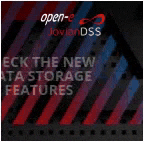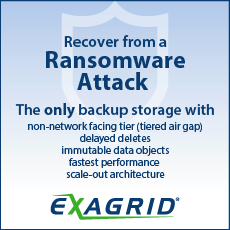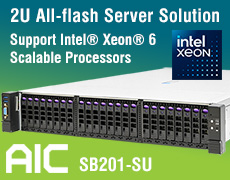Top 3 Emerging Trends Impacting NAS Market Through 2020 – Technavio
Increased traction for cloud-based NAS and use of flash, big data analytics
This is a Press Release edited by StorageNewsletter.com on July 14, 2016 at 3:11 pmTechnavio‘s (Infiniti Research Limited) latest report on the global enterprise NAS market (91 pages, $2,500) provides an analysis on the most important trends expected to impact the market outlook from 2016-2020.
Technavio defines an emerging trend as a factor that has the potential to impact the market and contribute to its growth or decline.
Rakesh Kumar Panda, lead analyst, Technavio, specializing in research on data center, says: “The global enterprise NAS market is expected to exceed $17 billion by 2020, growing at a CAGR of more than 21%. The cost-effectiveness of the NAS system makes it the preferred choice among enterprises. The adoption of NAS systems is high in enterprise environments. Vendors of NAS have begun to create customized NAS solutions for large businesses that are looking at NAS as a full-fledged information management solution. Such factors are expected to contribute to the growth of the market in the coming years. Large enterprises are likely to adopt NAS systems that are capable of storing data at petabyte levels.”
Top 3 emerging trends driving global enterprise NAS market:
1/ Increased traction for cloud-based NAS
Cloud-based NAS is a remote storage that can be accessed over the Internet. It is also termed as cloud NAS-as-a-service and is often used for backups and archiving. This storage is hosted by a third-party service provider that charges enterprises based on capacity and bandwidth utilized. A key benefit of using this cloud-based service is that data can be accessed from anywhere and at any time. However, the data transfer rate is dependent on the network connection.
There are several vendors involved in integrating the existing NAS system with the popular cloud storage service Amazon S3. NAS are also used in cloud data centers for storage provisioning purposes. The integration of on-premise NAS with cloud storage will gain traction in the future as it allows overall control over the latest data in the NAS and facilitates the backing up and archiving of data in the cloud.
2/ Evolution of big data analytics
Big data analytics has triggered widespread technological progress in the enterprise storage arena. Both small and large enterprises utilize big data analytics and associated analytical approaches to gain information for business forecasts. On-the-go business is a popular trend and is made viable through advances in technology in mobile devices and tablets.
Data is continuously getting fed into storage systems. This data is generated through multiple devices and users can gain useful insights using big data analytics. Traditional storage systems are not feasible to run analytics on massive sets of complex data. Vendors in the market offer storage systems that are suitable for analytical purposes and are likely to trigger a spate of product innovations during the forecast period.
3/ Increased use of flash storage
SSD storage, commonly known as flash storage, offers greater efficiency compared to the traditional HDD storage device. Currently, the cost of flash-based NAS storage is several times larger than that of HDD-based NAS storage. Vendors are continuously decreasing their product prices because of the increased demand for storage in the market.
With the increased user access needs, flash-based NAS storage arrays offer 40-45 times better performance than HDD I/O performance. Because of the higher cost involved in procuring flash-based NAS, these systems will experience a higher growth in large and mega data centers.
However, the price of these systems is likely to drop by 5%-10% year-over-year due to which their adoption rate will increase in 2017-2020.
“The overall market will experience steady growth with the adoption of flash and traditional storage systems, where flash is likely to add more revenue in the upcoming years,” says Rakesh.














 Subscribe to our free daily newsletter
Subscribe to our free daily newsletter

